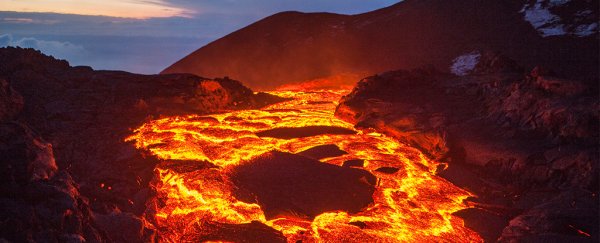Early Earth grew up in a chaotic time. As our planet tried to find its place in a relatively young Solar System about 4.5 billion years ago, it was under constant attack from waves of comets, whizzing asteroids, and even some failed proto-planets.
The Late Heavy Bombardment period was the absolute zenith of all this volatility, and although there's some debate, astronomers think it may have been triggered by a migration of the gas giants.
It's thought that Jupiter and Saturn began to move closer to the Sun during this period, while Uranus and Neptune pulled farther away, leaving behind a wave of debris to pummel other planets and moons.
A fresh analysis of ancient asteroids and lunar rocks has now put a new time stamp on this violent game of musical chairs. Using dynamic models, an international team of astronomers has estimated that this great migration occurred roughly 4.48 billion years ago, which is much earlier than first proposed.
If the timeline is right, it would mean that shortly after forming, our planet could have been calm enough to support the first emerging life forms.
"We know that giant planet migration must have taken place in order to explain the current orbital structure of the outer Solar System," says lead author and geologist Stephen Mojzsis from the University of Colorado Boulder.
"But until this study, nobody knew when it happened."
Previous attempts at dating the giant planet migration were based on lunar rocks collected during the Apollo missions. These appeared to go back only 3.9 billion years, which is much younger than the actual age of the Moon.
These lunar samples, however, may not be the most reliable sources. The researchers suggest that many of these rocks were contaminated with debris from a later impact on the Moon, potentially giving us a false date for the heavy bombardment.
To get a proper timeline, astronomers had to find a purer source; as asteroids predate planet formation, they were a natural next step.
"The surfaces of the inner planets have been extensively reworked both by impacts and indigenous events until about 4 billion years ago," explains astronomer Ramon Brasser from the Earth-Life Science Institute in Tokyo.
"The same is not true for the asteroids. Their record goes back much further."
Compiling a massive database of meteorites that had crashed into Earth, the team found these records only went back 4.48 billion years. This means that a heavy bombardment, which would have melted Earth's crust all at once, must have occurred just before that date.
"No stable niches for the prebiotic chemistry leading to life were possible in the first ~100 million years," the authors write.
The researchers note that if the last time Earth's crust melted on a global scale happened due to a colossal impact roughly 4.45 billion years ago, "such an event effectively sterilised the planet by eroding the hydrosphere, melting the crust and creating shallow magma oceans."
Only after the slate had been wiped clean, was Earth stable enough to support living organisms. When the heavy bombardment finally began to subside, the team's models reveal our planet's upper crust may not have been fully sterilised.
This means that after about 4.4 billion years, it's entirely possible some DNA-peptide microbes were able to take up shelter in deep hydrothermal vents. The team speculates that when this volatile period ended, these tough microbes might have repopulated the planet from safe havens in the crust.
That last suggestion is just a hypothesis at this stage. Nevertheless, the realisation that life could have started on Earth just a hundred million years after our planet was formed is truly astonishing. Today, the oldest known fossil dates to just 3.5 billion years old.
The findings have been published in The Astrophysical Journal.
